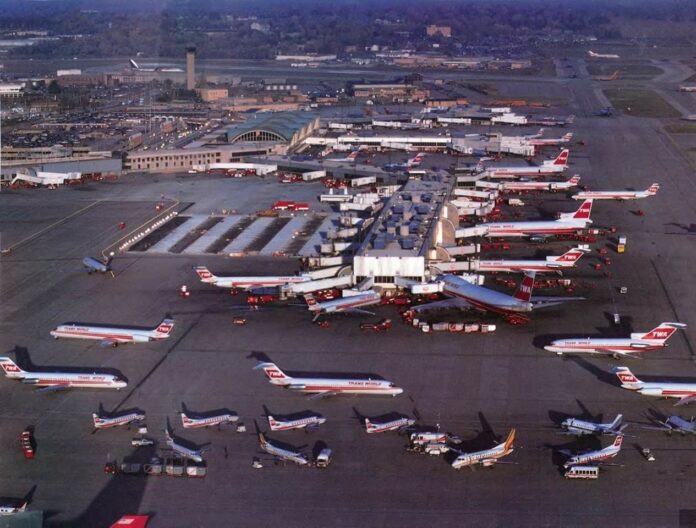In the intricate tapestry of civil aviation, where dreams take flight and horizons are boundless, a key player works tirelessly behind the scenes to connect the world. Airline hubs, those bustling centers of activity and convergence, serve as the beating heart of global connectivity. As passengers navigate the skies, these strategic hubs stand as the invisible threads that weave together journeys, cultures, and continents. Join us as we uncover the profound role of airline hubs in connecting passengers worldwide and forging the bonds that bridge the gaps between nations.
Gateway to the World: The Essence of Airline Hubs
At first glance, an airline hub might appear as a bustling confluence of aircraft and passengers. Yet, its significance runs far deeper than its surface appearances. An airline hub is not merely a point of departure and arrival; it is a nexus of connections, a nucleus of opportunities, and a conduit of commerce. Every takeoff and landing, every arrival and departure, resonates with the symphony of a hub’s orchestrated operations.
Strategic Geographic Placement
The location of an airline hub is a strategic decision that shapes an airline’s entire network. Hubs are typically situated at geographic crossroads that allow airlines to efficiently connect various destinations. These locations often boast favorable weather conditions, geographic centrality, and proximity to major cities. This strategic placement enables airlines to offer passengers convenient connections and shorten travel times.
The Spokes and Wheels: Hub-and-Spoke Model
The hub-and-spoke model is the backbone of airline hub operations. In this model, a central hub serves as a focal point, with flights radiating out to various destinations, known as spokes. Passengers from different origins converge at the hub, where they transfer to connecting flights that take them to their final destinations. This model maximizes an airline’s network reach, connecting cities that might not have direct flights otherwise.
Seamless Connections and Convenience
For passengers, the hub-and-spoke model offers unparalleled convenience and connectivity. It allows travelers to reach a multitude of destinations with fewer stops, minimizing layovers and travel time. Airlines meticulously time their schedules to facilitate smooth connections, ensuring that passengers have adequate time to transfer between flights and reach their destinations efficiently.
Economic Impact and Job Creation
Airline hubs play a significant role in driving economic activity in the regions where they are located. The presence of a hub generates employment opportunities in various sectors, including aviation, hospitality, transportation, and retail. Local economies benefit from increased tourism, business travel, and consumer spending. The infrastructure surrounding a hub, such as airport facilities and transportation networks, receives investment and development, further boosting economic growth.
Logistical Complexity: Behind-the-Scenes Operations
Behind the scenes, airline hubs operate with intricate precision. Airlines must manage a complex web of flight schedules, crew assignments, maintenance routines, and baggage handling. The challenge lies in maintaining this intricate ballet while adapting to factors such as weather disruptions, air traffic congestion, and unforeseen events that could disrupt operations.
Network Connectivity: A Tapestry of Partnerships
Airline hubs are not isolated islands; they are woven into a larger fabric of partnerships and alliances. Airlines form alliances and partnerships with other carriers to expand their network reach and offer passengers a broader range of destinations. This interconnectedness allows passengers to seamlessly transfer between partner airlines’ flights, opening up a world of possibilities.
Types of Hubs: Global Giants and Regional Players
Airline hubs come in various sizes and scopes. Global hubs, located in major international cities, serve as the epicenter of an airline’s network, connecting continents and accommodating long-haul flights. Regional hubs, on the other hand, focus on connecting nearby cities and supporting shorter flights. These hubs cater to both business and leisure travelers, offering convenient options for those seeking quick getaways or efficient business trips.
Competition and Growth: The Hub Wars
In the realm of airline hubs, competition is fierce. Major airports and cities vie for the status of being a hub, recognizing the economic benefits and prestige that come with it. Airlines strategically choose hub locations to capitalize on market demand, bypassing congested airports and positioning themselves in markets that are ripe for growth.
The Future of Hubs: Adaptation and Evolution
As the aviation industry evolves, so too do airline hubs. Technological advancements, changing passenger preferences, and environmental considerations are reshaping the way hubs operate. Airports are incorporating smart technologies to streamline passenger experiences, while sustainability initiatives are driving the adoption of more fuel-efficient aircraft and greener operations.
Conclusion: Bridging Skies and Souls
In the soaring realm of aviation, airline hubs serve as more than logistical centers; they are bridges that span the skies, connecting the world in ways that were once deemed unimaginable. These hubs, with their intricate networks and orchestrated operations, are a testament to the human spirit of exploration and connectivity. As you navigate the skies and journey between distant lands, remember that the invisible threads of airline hubs are the conduits that make these adventures possible, uniting the people and places that together create the marvel of global aviation.
























